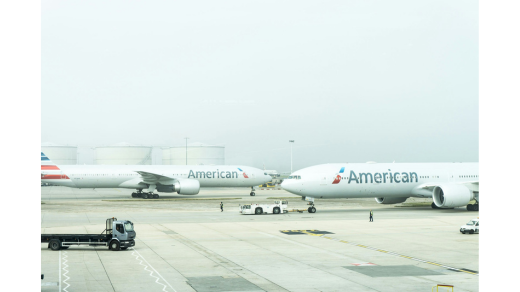The best way to travel by train across Europe is actually determined by one’s itinerary. Super trains- France TGV, Spain AVE, and Germany ICE create the fastest connection between major cities, while Swiss Railway offers scenic ways like Glacier Express. Eurail Pass, a product of the European Union, can also be availed for routing flexibility and economical savings.
What is the Eurail Pass, and how does it work? A Eurail Pass offers unlimited travel on most European trains for a set number of days within a given time frame. You can choose from different types of passes, such as the Global Pass, One Country Pass, depending on the countries you have in your travel itinerary. It is flexible for spontaneous traveling and can be more cost-effective for longer, multi-country trips.
Do I need to book train tickets in advance in Europe? It’s advisable to book tickets in advance, especially for high-speed trains and popular routes, as prices tend to increase as the date of departure draws near. Regional or slower trains can usually be bought on the day of travel without much hassle. For routes that require a reservation (like certain high-speed or night trains), booking in advance is a must.
Are there discounts on train travel for students or seniors? Yes, discounts are available for students, seniors, and youth travelers. Eurail Youth Pass offers discounted prices for the under 27-year-old travelers, while Senior Pass offers discounted prices for people above 60 years of age. Many countries also offer domestic discounts for students (like the ISIC card) and seniors, so do check for those specific deals.
How do I find the best train routes between European cities? You can use websites like Trainline, Eurail, or Omio to find the best train routes, departure times, and ticket prices. The Interrail website also offers useful resources for train travel across Europe, including route planners, timetables, and discounts.
How comfortable are European trains? European trains are generally comfortable. High-speed trains offer wide, spacious seating and air conditioning. They are usually equipped with power outlets, Wi-Fi, and food services. Long-distance trains and overnight trains (such as sleeper cars) have bunk beds or private cabins for greater comfort. Swiss and Austrian scenic trains have panoramic windows to see the views.
What are the major train stations in major European cities? Some of the major train stations in Europe include:
Paris: Gare du Nord, Gare de Lyon
London: London St Pancras
Berlin: Berlin Hauptbahnhof
Rome: Roma Termini
Madrid: Madrid Atocha
Vienna: Wien Hauptbahnhof
Amsterdam: Amsterdam Centraal
How do I find my way around train stations in Europe? Major train stations are usually well signposted in both the local language and English, but it is useful to study the station plan before you go. Look for departure boards with up-to-date information on the departure times of trains, platforms, and changes to the service. Most stations have information desks where staff can be helpful with directions and ticket queries.
What are the luggage restrictions on European trains? The luggage restrictions are different for every train, but most European trains do not limit the amount of luggage you can carry. Generally, you can bring large suitcases, backpacks, and personal items, provided they fit within the designated luggage areas (usually near the doors or in overhead racks). Some high-speed trains may have specific rules for large or bulky items, so it’s good to check in advance.
Can I use overnight trains traveling across Europe? Yes, there are a few night trains available, mostly on intercity journeys – the Nightjet, for example, or Thello for traveling from Paris to Italy. They’re the best way of saving on the accommodation when travelling between cities because overnight trains allow for sleeper cabins, couchettes, or simply reclining seats.
What is the most scenic train route in Europe? Europe has some of the world’s most beautiful train journeys, including:
Glacier Express (Switzerland): A breathtaking panoramic route through the Swiss Alps.
West Highland Line (Scotland): Offers breathtaking views of mountains, lochs, and coastal landscapes.
Cinque Terre (Italy): A coastal route offering views of the Mediterranean and the colorful villages of the Cinque Terre.
Bernina Express (Switzerland/Italy): It is a UNESCO World Heritage route, with dramatic mountain landscapes.
Do I need a passport to travel by train in the Schengen Area? If you’re traveling within the Schengen Area (a group of European countries with open borders), you will usually not be asked to present a passport when crossing from one country to another. However, you may be asked for your passport at non-Schengen country border crossings or at random spot checks. Always carry your passport or ID with you.
What’s the difference between first-class and second-class train tickets in Europe?
First class tends to provide more room to sit, less noise in cars, access to premium lounges at stations, and free food or drinks, among other things.
Second class is cheaper but still comfortable enough, with ample legroom, power outlets, and air conditioning. Most passengers find second-class sufficient for most routes.
Is there a travel app I can use to navigate my train travels? Absolutely. Several apps make it even easier for you to get to where you’re going by train:
Trainline: Purchase tickets and see European train timetables
Eurail/Interrail App: Organize your pass, consult timetables, and prepare trips
Omio: A great multi-modal comparison of trains, buses, and flights
DB Navigator: Plan and navigate train travel within Germany and into the rest of Europe.
Rail Planner: This app helps Eurail Pass holders in trip planning and is even able to show them offline timetables.
Can I take my food and beverages with me to European trains? You are generally allowed to take your food and drinks onto most European trains. However, certain services may have rules against this. High-speed trains, such as France’s TGV or Germany’s ICE, usually have a food cart or onboard restaurant. However, it is always a good idea to pack a snack or meal for the journey. Some routes may not allow alcohol, so check the train’s specific policies.
Conclusion:
Travel by train across Europe is efficient, comfortable, and often scenic. You can book a high-speed train between major cities or take a leisurely scenic route. The more you understand how train systems work, the different types of passes available, and how to make the most of your journey, the better your travel experience will be.




